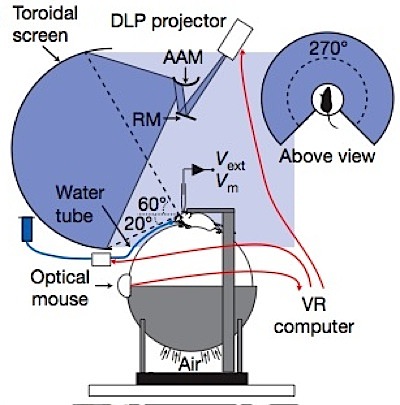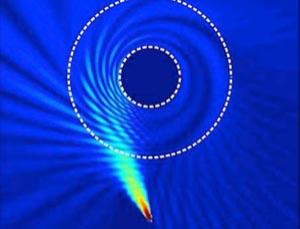
© David Tank
By putting sensors in the brains of mice as they ran through a
Quake-derived virtual reality, scientists have found a way to study neurological activity in moving animals.
The setup allows for real-time, almost-real-motion tracking of single neurons. That feat has eluded researchers who have a fuzzy, general understanding of brain systems, but little knowledge of how individual cells actually work. They hope that cell-level details will make sense of motion, cognition and other complex mental functions.
"One of the major research areas of neuroscience is the development of techniques to study the brain at cellular resolution," said Princeton University neuroscientist David Tank, co-author of the study published Wednesday in
Nature. "The information of the nervous system is contained in the activity of individual neurons."
Tank's team studied hippocampal place neurons, which are activated when an animal is in a particular location in its environment. Ever since hippocampal place neurons were identified 40 years go, scientists have wondered exactly what mechanisms make them fire.

